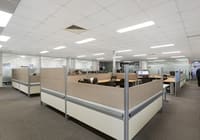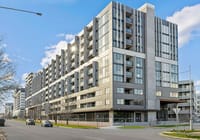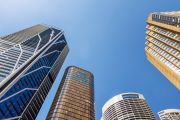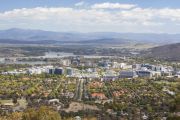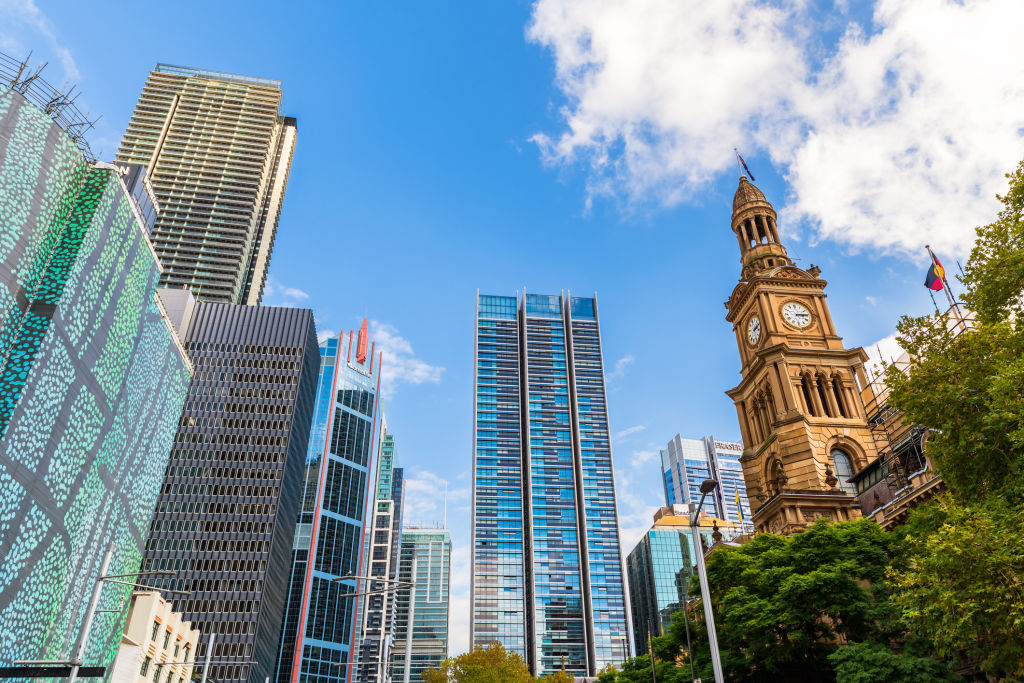
Sydney CBD towers show first price gain in three years
Values across the Sydney CBD office tower sector have risen for the first time in three years, marking a potential turning point as the country’s largest market recovers from weak demand and high interest rates.
While Sydney’s gain is modest – a lift of just 0.7 per cent in capital values in the March quarter, its first since early 2022 – it also reflects a tightening bid-ask spread and renewed buyer interest after a prolonged correction, according to property analytics firm MSCI.
“We’re starting to see the early signs of price discovery re-emerging in Sydney,” said Benjamin Martin-Henry, head of private assets research at MSCI.
“Vendors have largely come to terms with the new pricing environment, and the capital is there – particularly for well-leased, quality assets.”
The MSCI index takes in more than $200 billion worth of commercial real estate – office towers, shopping malls, warehouses – comprising 1372 individual assets. Office towers are the biggest single sector, accounting for more than 40 per cent of the index.
Big deals are slowly beginning to take shape at the top of end of Sydney’s market. Among them, fund manager Investa is on track to take control of a $1.4 billion stake in Grosvenor Place, one of Sydney’s best-known office towers, in a transaction that is expected to be finalised in June.
The bid-ask spread in Sydney – a metric used by MSCI to quantify the gap in price expectations between buyers and sellers – has narrowed to around 13 per cent, compared to 30 per cent two years ago.
So far, the green shoots of recovery are patchy across the CBD markets. Brisbane also posted positive capital growth for the quarter, supported by steady demand and relatively constrained supply.
But tower values in Melbourne and Perth are still sliding lower, though at a slower rate. Elevated vacancy in Melbourne and a weaker leasing outlook in Perth remain headwinds, but both markets saw enough income resilience to post mildly positive total returns for the quarter, Martin-Henry said.
Melbourne recorded capital losses of 0.75 per cent taking its total losses in the current downturn to over 25 per cent, almost double losses recorded during the global financial crisis, according to MSCI.
David Harrison, who heads fund manager Charter Hall, a major owner and manager of office towers, agrees the market was broadly at an inflexion point, with 2024 likely to be seen as the “trough year”.
“If you look at all the major office markets, Sydney CBD is turning the quickest along with Brisbane. Capital growth is starting to move forward after a couple of years of decline,” he told The Australian Financial Review.
For most property funds, income returns have remained relatively consistent, at around the 5 per cent. That income, combined with the recovery of capital growth will effectively push total returns above 5 per cent, he said.
But he also noted that the MSCI index clubbed together a variety of office properties, at different grades and in different precincts, across Sydney and in other markets.
“The core of Sydney CBD for modern office towers is doing the best,” he said.
“When there is a general ‘troughing’ and then with interest rates coming down, all the different grades are going to be positively affected but the more modern assets and the longer leased asset are going to out-perform the older assets with shorter lease expiries.”
Boutique syndicator Quintessential, led by Shane Quinn, has already been snapping up some CBD office towers at substantial discounts ahead of the recovery, such as its purchase of One Margaret Street in Sydney in 2023.
But Quinn also warned the recovery was likely to create a two-tiered market as top tenants jostled for space in the best towers.
Major tenants will be upgrading in order to get their staff back in the office.
“You can’t in these current times put businesses in a building without great natural light, good lifts and air conditioning and expect them to attract and retain the best possible staff,” Quinn said.
The flight to quality means trouble for lesser-quality buildings which will be less favoured by tenants. Without significant investment, those assets will suffer, according to Quinn.
“There will be an absolute bloodbath in that B and C grade space, while there will be a purple patch in well located A grade and premium space that is purchased substantially below replacement costs and for which the demand increases substantially from tenants jumping from redundant buildings,” Quinn said.
“That’s the big thing that you have to watch over the next 12 months: the secondary lenders are going to have to dump those B and C grade properties that they’ve lent money against. The cash flows will run out and the running costs are just too high to service the outgoings, let alone debt repayments while those buildings are empty.”
Watching the market closely is Josh Cullen, Cushman & Wakefield’s capital markets head, who handles major office tower deals. The race for leasing space in the top towers will sharpen rapidly as the major new additions in Sydney, Mirvac’s 55 Pitt Street and Charter Hall’s second tower at Chifley Square, fill up, he said.
“I expect both these assets to be 100 per cent committed before completion,” he said.
“After these two projects in the core we potentially have no new supply until the above station developments which are mooted for 2032.
“Add into the mix for interest rate cuts and we will see investors be more confident to lower their terminal rates for investment into office, we have already seen the margin rate reduce significantly in the past few months.”




